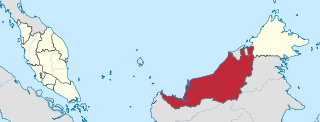
Sarawak is a state of Malaysia. The largest among the 13 states, with an area almost equal to that of Peninsular Malaysia, Sarawak is located in northwest Borneo Island, and is bordered by the Malaysian state of Sabah to the northeast, Kalimantan to the south, and Brunei in the north. The capital city, Kuching, is the largest city in Sarawak, the economic centre of the state, and the seat of the Sarawak state government. Other cities and towns in Sarawak include Miri, Sibu, and Bintulu. As of the 2015 census, the population of Sarawak was 2,636,000. Sarawak has an equatorial climate with tropical rainforests and abundant animal and plant species. It has several prominent cave systems at Gunung Mulu National Park. Rajang River is the longest river in Malaysia; Bakun Dam, one of the largest dams in Southeast Asia, is located on one of its tributaries, the Balui River. Mount Murud is the highest point in Sarawak.

Kuching, officially the City of Kuching, is the capital and the most populous city in the state of Sarawak in Malaysia. It is also the capital of Kuching Division. The city is on the Sarawak River at the southwest tip of the state of Sarawak on the island of Borneo and covers an area of 431 square kilometres (166 sq mi) with a population about 165,642 in the Kuching North administrative region and 159,490 in the Kuching South administrative region—a total of 325,132 people.
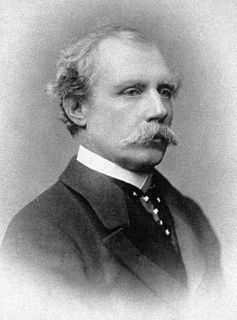
Charles Brooke, Rajah of Sarawak, GCMG, born Charles Anthoni Johnson, ruled as the head of state of Raj of Sarawak from 3 August 1868 until his death. He succeeded his uncle, James Brooke, as the second White Rajah of this small country on the coast of Borneo.

Sibu is an inland town in the central region of Sarawak. It is the capital of Sibu District in Sibu Division, Sarawak, Malaysia. The town is located on the island of Borneo and covers an area of 129.5 square kilometres (50.0 sq mi). It is located at the confluence of the Rajang and Igan Rivers, some 60 kilometres from the South China Sea and approximately 191.5 kilometres (119 mi) north-east of the state capital Kuching. Sibu is mainly populated by people of Chinese descent, mainly from Fuzhou. Other ethnic groups such as Melanau, Malay, and Iban are also present, but unlike other regions of Sarawak, they are not as significant. The town population as of 2010 is 162,676.

Sri Aman is a town and the capital of Sri Aman District and Sri Aman Division in Sarawak, east Malaysia.

The White Rajahs were a dynastic monarchy of the British Brooke family, who founded and ruled the Raj of Sarawak, located on the north west coast of the island of Borneo, from 1841 to 1946. The first ruler was an Englishman James Brooke. As a reward for helping the Sultanate of Brunei fight piracy and insurgency among the indigenous peoples, he was granted the province of Kuching which was known as Sarawak Asal in 1841 and received independent kingdom status.
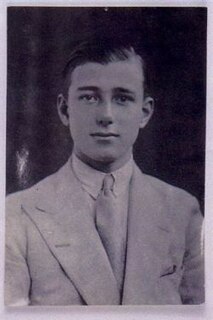
Anthony Walter Dayrell Brooke was appointed the Rajah Muda of Sarawak on 25 August 1937, by his uncle, Rajah Vyner of Sarawak the third and last of the ruling White Rajahs.
Rentap (d.1870) was an Iban-Dayak warrior and a recognized Iban hero in Sarawak during the reign of the first White Rajah, James Brooke. His praisename, "Rentap Tanah, Runtuh Menua" translates from the Iban language as "Earth-tremor, World-shaker". His famous and frequently quoted slogan was "Agi idup, Agi ngelaban" which translates into "Still alive, still fighting".
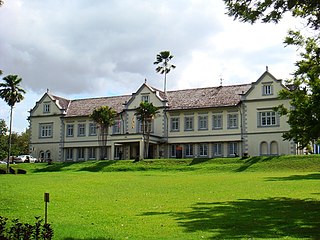
The Sarawak State Museum is the oldest museum in Borneo. It was founded in 1888 and opened in 1891 in a purpose-built building in Kuching, Sarawak. It has been said that naturalist Alfred Russel Wallace encouraged Charles Brooke, the second White Rajah of Sarawak, to establish the museum: there is no evidence for this.

Sylvia Leonora, Lady Brooke, Ranee of Sarawak, was an English aristocrat who became the consort to Sir Charles Vyner de Windt Brooke, Rajah of Sarawak, the last of the White Rajahs.

History of Sarawak can be traced as far as 40,000 years ago paleolithic period where the earliest evidence of human settlements is found in the Niah caves. A series of Chinese ceramics dated from 8th to 13th century AD was uncovered at the archeological site of Santubong. The coastal regions of Sarawak came under the influence of the Bruneian Empire in the 16th century. In 1839, James Brooke, a British explorer, first arrived in Sarawak. Sarawak was later governed by the Brooke family between 1841 and 1946. During World War II, it was occupied by the Japanese for three years. After the war, the last White Rajah, Charles Vyner Brooke, ceded Sarawak to Britain, and in 1946 it became a British Crown Colony. On 22 July 1963, Sarawak was granted self-government by the British. Following this, it became one of the founding members of the Federation of Malaysia, established on 16 September 1963. However, the federation was opposed by Indonesia, and this led to the three-year Indonesia–Malaysia confrontation. From 1960 to 1990, Sarawak experienced a communist insurgency.

Margaret, Lady Brooke, Ranee of Sarawak was the ranee of the second White Rajah of Sarawak, Charles Anthony Johnson Brooke. She published her memoir, My Life in Sarawak, in 1913. The memoir offers a rare glimpse of life in The Astana in Kuching and colonial Borneo. The Ranee became legendary during her lifetime as a woman of strength and intelligence, as well as on account of her status, which she shared with the other White Rajahs, of being at once an English subject and also an Asian monarch.

The Astana is a palace in Kuching, Sarawak, Malaysia, on the north bank of the Sarawak River, opposite the Kuching Waterfront. It is the official residence of the Yang di-Pertua Negeri Sarawak, the Governor of Sarawak. The name is a variation of 'istana', meaning 'palace'. It was built in 1870 by the second White Rajah, Charles Brooke, as a wedding gift to his wife, Margaret Alice Lili de Windt. The palace is not normally open to the public, although the landscaped gardens are, which can be reach by a boat ride across the Sarawak River. It is part of the Kuching Heritage Trail.
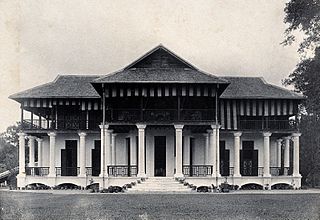
Borneo Company Limited, formed in 1856, was one of the oldest companies based in East Malaysia.
The Fort Sylvia is a historical fort in Kapit, Sarawak, Malaysia. Built in 1880, it was renamed after Rani Sylvia Brooke, wife of Rajah Charles Vyner Brooke, in 1925. During the 1960s, the fort housed the District Office and the District Court House, and later the Resident’s Office when Kapit Division was formed in 1973.

Jason Desmond Anthony Brooke is the grandson of the last ruling Rajah Muda of Sarawak, Anthony Walter Dayrell Brooke, and a prominent representative of the Brooke Dynasty in Sarawak.

Chinatown is located at Padungan road, Kuching, Sarawak, Malaysia. The most notable streets in the Chinatown are Main Bazaar and Carpenter Street.

The Islamic Heritage Museum is a museum in Kuching, Sarawak, Malaysia. It is part of the Kuching Heritage Trail.
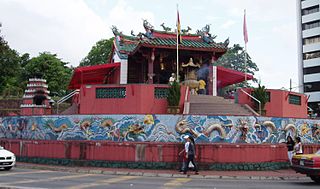
Tua Pek Kong Temple is a Chinese temple situated near the waterfront of Kuching, Sarawak, Malaysia, opposite the Chinese History Museum. It is the oldest temple in the city and formed a part of the Kuching Heritage Trail.

Hong San Si Temple is a Chinese temple situated in Carpenter Street of Kuching, Sarawak, Malaysia. It is part of the Kuching Heritage Trail.



















